- Category
- War in Ukraine
Russian Drones Hunt Civilians, Turn Kherson Into Deadly Training Ground
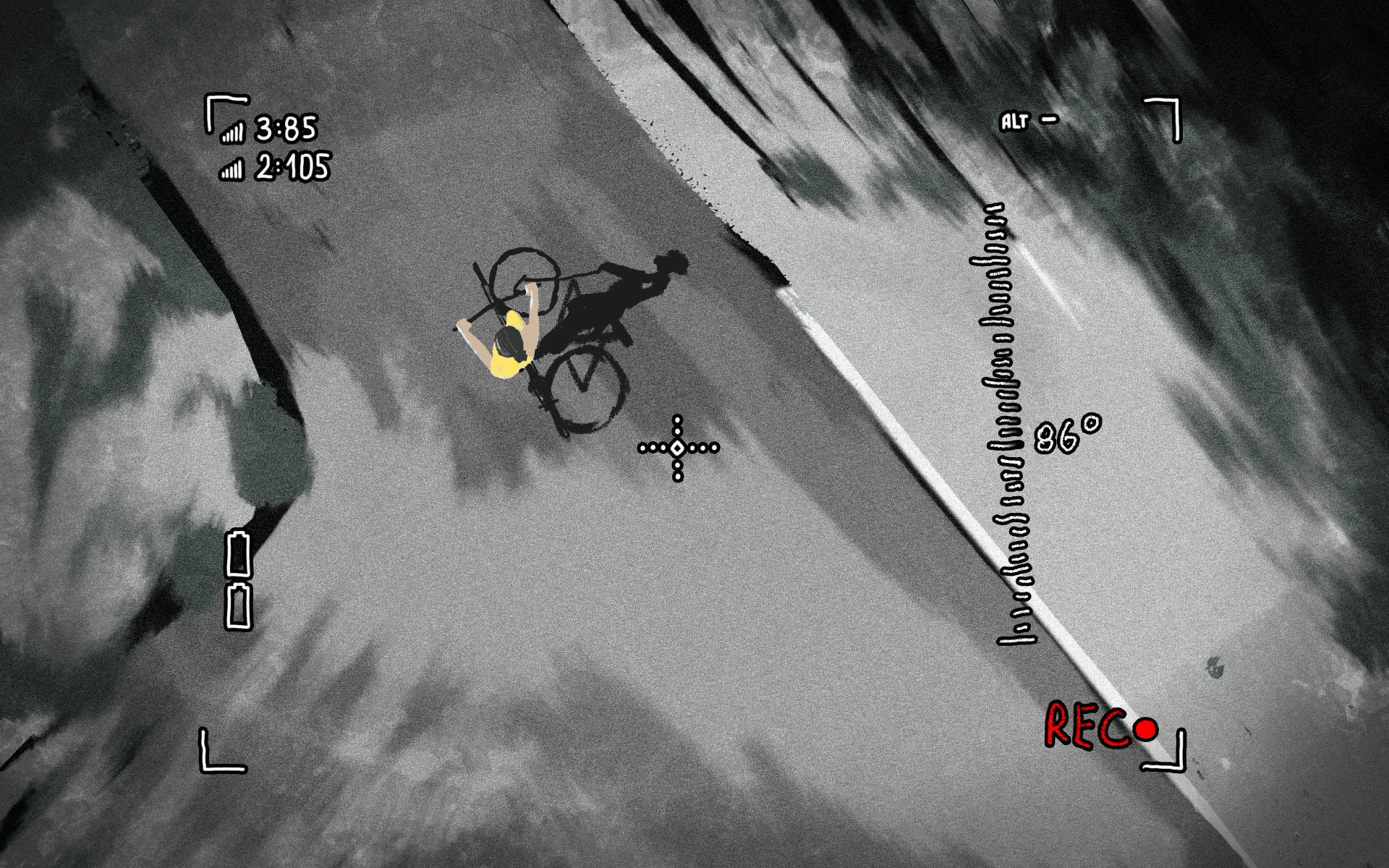
“Two girls died,” says Slava, a Kherson local who survived a Russian drone attack, his scarred hands a painful reminder. He glances at the bus stop where we’ve paused, and twitches. “Let’s move,” he says. Bus stops, he knows too well, are prime targets.
Once bustling with people waving Ukrainian flags, Kherson's Freedom Square now stands empty. The only buzzing sound is now synonymous with a certain doom and the clear, sunny sky—a death sentence for the locals who decided to stay.
Russian troops have taken up a whole new tactic to terrorize civilians in Kherson: explosive FPV drones. No one is safe in the city that has become the shadow of itself.
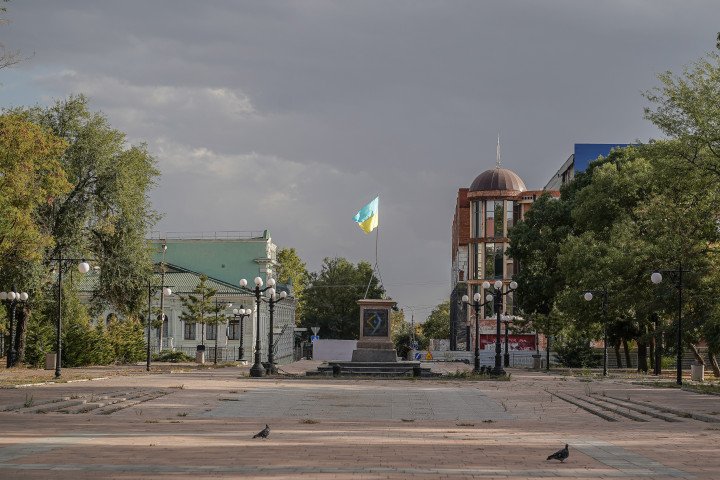
Russian FPV drones charged with explosives have been increasingly maiming and killing civilians—and the Russians are bragging about it on social media, sharing videos usually dubbed with snarky remarks on the effectiveness of their hit.
Up to 330 drone strikes and 224 explosives hit the city on September 9 alone, Ukrainian TV channel TSN reported. In August, Russia launched over 2,000 drones on Kherson and around the southern front line, adding up to the civilian casualties list every day.
The only way to walk in the city is under the tree lines. As summer is coming to an end, the falling leaves mean more victims in the martyr city of Kherson. Standing in the open is a death warrant, local police officer Andrii Kovina told us, while wearily looking at the sky in the tense expectation of a lethal buzzing sound.
“Every day here, we have people injured and killed, specifically civilians,” he said. “This is the greatest tragedy when a peaceful person who’s not even in a uniform is just attacked while walking.”
The sound of a close explosion echoes in the empty streets. Kovina shrugged and continued, unfazed. This is the new normal here. The day before, two guided bombs were launched on Kherson.
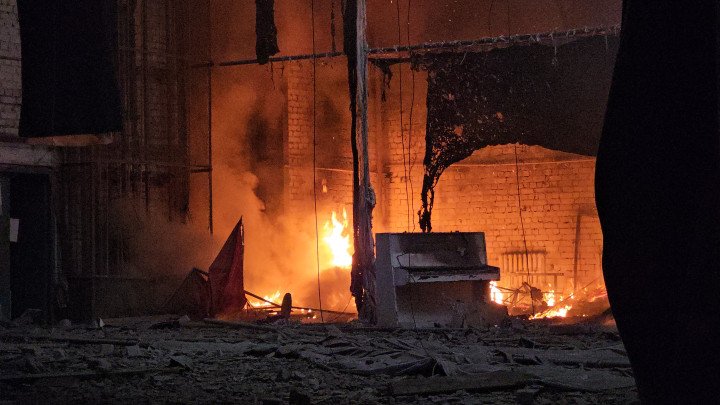
Meanwhile, Russian FPV drones are relentlessly hunting ordinary people who dare to walk in the open. Here, a grocery trip can be deadly.
“This is banal hunting, the terror of the civilian population when an elderly person riding a bicycle or barely walking down the street is hunted by a drone. What can you call it?” he asked, knowing the answer.
Hunting civilians with precision
Slava’s injuries bear witness to Russia’s attacks on civilians, a retaliation that never stopped since the Kremlin’s troops retreated to the other side of the river in 2022. Six people were recently injured when a Russian FPV drone dropped an explosive on a minibus waiting for passengers on September 8, 2024.
Slava was helping fellow locals on a humanitarian point when the Russian artillery attacked it a year ago. Not everyone survived.
“My friend and I got burns because we ran out through the flames,” he said. “Two girls died in this attack.” Now, drones have become the nightmares of Kherson locals.

Even when the drones are shot down, danger remains due to the unexploded charges that can go off at any moment.
Most recently, Russian forces attacked a civilian car near Havrylivka village with a drone, killing two people and wounding one.
In this footage, it’s clear that the drone pilot has spotted a civilian and decided to finish him off with a grenade while the victim, obviously wounded, runs for cover.
Cars, bicycles, even passersby—everything is a target for the Russians, as long as it moves and they can train on them.
Slava doesn’t have any other choice than to stay. His parents are too old to move, and he doesn’t have the resources to build a new life elsewhere. Russia’s drone attacks are, once again, targeting the most vulnerable, condemning them to a double sentence.
“My parents are in Kherson,” he said with an apologetic look. “They couldn’t go away, and I work here; if I leave the city, I will have to find work, and I’m not sure I will.”
Targeting medics
Another chose to stay to help: Inna Kholodniak, the head of Kherson’s children’s hospital, the only one taking care of Russia’s youngest victims in the city.
She showed us an entire photo wall of kids wounded by Russian attacks since Kherson’s liberation. The photos covered an entire corridor, with the children’s story and the relatives they lost in the attacks.
Since November 2022, when Ukrainian forces pushed Russian troops across the river, the city has faced a relentless barrage of artillery, glide bombs, and drones—far from the headlines.
Dr. Kholodniak told us that since then, around 140 children with mine explosion injuries of varying severity have been treated at the hospital.
“Previously, it was more tanks and artillery; today, it is drones, glide bombs,” she said. “Medical personnel who go to work can be fired upon at any moment.
Between July and August, almost every second victim of Russian troops in the Kherson region was hit by Russian drones, reported Oleksandr Prokudin, the head of the Kherson Oblast Military Administration, on August 13.
During this period, Russian troops attacked Kherson with drones about 3,300 times. Seven people were killed, while 110 adults and two children were injured.
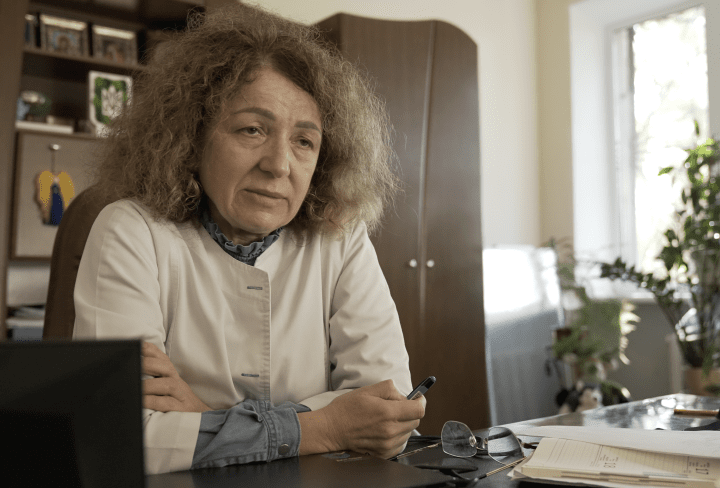
Nothing is sacred for the Russians, Dr. Kholodniak told us.
“When you enter the hospital's territory, you can see a drone flying over it and monitoring what is happening here,” she said. “It can explode at any moment; it’s a massive threat to the lives of both patients and medical staff.”
Since then, most of the hospital’s windows have been sealed with sandbags to protect the children inside the facility, where operations continue despite the menace.
For Dr. Kholodniak, the Russians' logic is straightforward: terror, pure and simple. “To keep the population in fear,” she adds.
By her desk, a bulletproof vest and helmet rest beside shrapnel fragments—a grim juxtaposition in a children’s hospital. Yet, this is the new normal.
Dr. Kholodniak considers it her duty to stay “where it's tough, where there's pain, where it’s needed. That's just the nature of the profession,” she said with a tired smile.
————
Slava’s name was changed as he desired to stay anonymous for safety reasons.

-531fe8d92c87f1630d3f1a2503c33089.png)

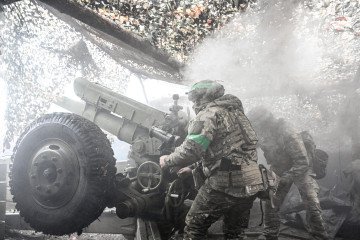
-29a1a43aba23f9bb779a1ac8b98d2121.jpeg)
-886b3bf9b784dd9e80ce2881d3289ad8.png)


-f88628fa403b11af0b72ec7b062ce954.jpeg)